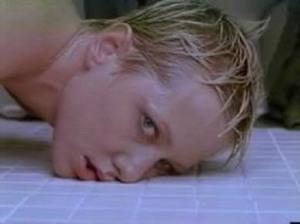Norman Bates is portrayed as a psychopath who has emotional disability which developed from the abuse that he had to bear for a long time. This disability turns him into a violent criminal who commits one murder after another. In the movie, we are told that he killed his mother and her lover as he could not stand the fact that her mother no longer dotes on him the way she used to. However, he is never really able to accept the fact that his mother has died. This is evident when Norman gets attracted to Marion; he does what his mother would have done to control his relation with a woman. He comes back to mercilessly murder Marion and stabs her multiple times. He later cleans the blood-stained floor and throws her car in the swamp with Marion locked inside. According to Erb (2006), Marion’s stealing the money and Norman’s killing her shows the relationship between value and waste which highlights the Nazi’s ideology of “waste-currency-humanity.” This means that the mentally ill Norman will never have any relation with the money. He does the crime out of passion not profit. Moreover, the manner in which the camera focuses on Norman’s face, shows his emotionless and cold heartedness when he commits such atrocious crimes. Another incident that shows his criminality is when detective, Arbogast goes to Bates’s house to see his mother. Norman again comes disguised in a white gown and wig running towards the detective to stab him.
His evilness is depicted through the scene in which he seen talking to Marion in his parlor. He says, “I feel like I could crush her out and leave her forever.” This shows how he detests his mother and wishes to abandon her but is stuck in his “private trap.” Violence is shown in the scene when he hits Sam with a golf-stick and later they get into a duel in Norman’s house. He reacts violently whenever he is provoked.
Reference:
Erb, C, (2006). “”Have You Ever Seen the Inside of One of Those Places?”: Psycho, Foucault, and the Postwar Context of Madness. Cinema Journal, 45(4), 45-63.

